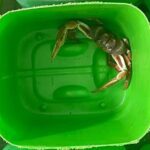The location of fishes can be tracked using underwater listening stations. But is the detection of electronically tagged fish by these stations equal across habitats? In their new publication in Canadian Journal of Fisheries and Aquatic Sciences, Nick Farmer and Jerry Ault develop a statistical method to account for gaps in tag detection. Read on to learn about their multi-year study in one of Florida’s marine protected areas.
Located about 70 miles west of Key West, Florida, the Dry Tortugas region is comprised of seven tiny islands surrounded by some of the most spectacular and luxuriant coral reefs in the United States. Discovered by Ponce de Leon in 1513, the islands were dubbed the Dry Tortugas due to their lack of freshwater (“dry”) and the large populations of sea turtles (or “tortugas” in Spanish) nesting on their beaches.
A beautiful but isolated and unforgiving environment, the Dry Tortugas are perhaps best known as the location of Fort Jefferson, a 16-million-brick military fortress originally built to guard the entrance to the Gulf of Mexico and Mississippi River following the war of 1812. The Fort later became a Union prison that housed the infamous Dr. Samuel Mudd. Dr. Mudd treated the conspirator John Wilkes Booth following his assassination of US President Abraham Lincoln, as in “your name is mud”.
Research and recovery
The Dry Tortugas are a challenging place to conduct research—the intense ocean currents can leave you hanging on the anchor line with your fins cavitating behind you. Because of their isolation, you must bring all your own supplies including ship, scientists, dive tanks, food, and fuel. Despite these logistical challenges, the region contains some of the world’s most well-studied coral reefs. Satellite drifter tracks, sea surface temperature, and bathymetric maps have revealed that the Dry Tortugas are an important source of larval reef fish that support a multi-billion dollar fishing and diving industry in southern Florida and the Florida Keys.




